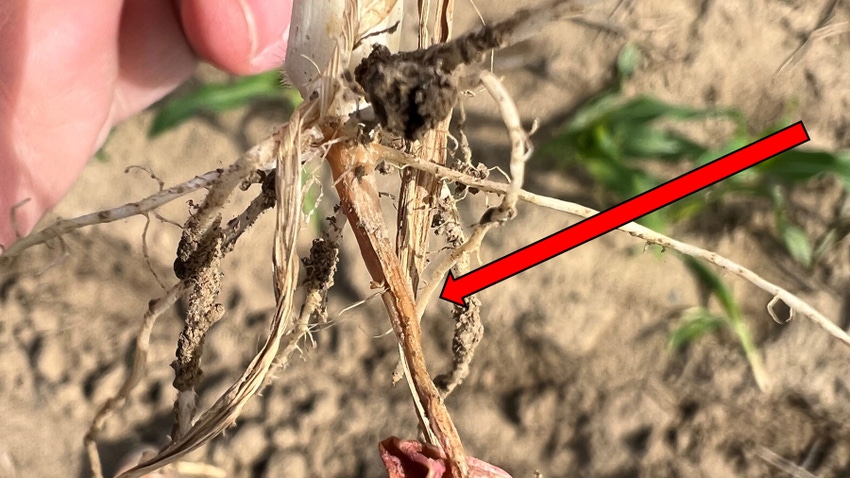July 5, 2023

by Dan Quinn
Many farmers in Indiana use starter fertilizer applications applied through the planter and near the seed. These applications can provide benefits such as early crop access to necessary nutrients, improved and more rapid plant growth, and reduced grain moisture at harvest.
However, placing fertilizer close to the seed at planting can increase potential for root damage and poor crop establishment, especially when improper products and/or rates are used. These risks can be exacerbated in coarser soil textures and in drier soil conditions after planting.
Damage caused by starter fertilizer applications can typically be identified by examining the roots of a corn plant. Look in areas with noticeable stand establishment or stand loss issues. Most starter fertilizer damage can be attributed to in-furrow or pop-up fertilizer applications, where fertilizer is placed directly on the seed.
However, damage can also occur from 2-by-2 starter fertilizer applications, and preplant anhydrous and urea applications. This can happen if rates are too high, injection depth is shallow and/or dry conditions exist at planting. Yet, these application methods greatly reduce the risk of potential injury compared to an in-furrow application.
Starter fertilizer injury is often most noticeable from a damaged radicle. That is the first root that emerges from the seed as it develops. If injured by fertilizer, the radicle will typically be short and brown to black in color, and almost looks like someone took a lighter to it. In addition, significant damage to the mesocotyl can occur from excessive starter fertilizer rates. This is the white, root-like tissue between the seed and base of the plant.
Why fertilizer can burn
Corn root damage caused by starter fertilizer is often attributed to the salt content present in fertilizers. The fertilizer salt index is often used to promote and sell safer in-furrow options. However, ammonia formation in the rooting zone can also contribute to these issues. For example, when high rates of nitrogen are applied close to the seed and rooting zone, ammonia can form and result in injury to the roots.
Due to these risks, limit the amount of nitrogen plus potash applied in a starter application. Potassium is typically not recommended in a starter fertilizer application in the first place unless soil test levels are below 70 parts per million.
Refer to the Tri-State Fertilizer recommendations. According to these recommendations, starter fertilizer applications are less risky when applied in a 2-by-2 application. Rates should range from 20 to 40 pounds per acre of N, phosphate and potash, and should not exceed 100 pounds per acre of salt fertilizers, including N and K.
As for in-furrow applications of fertilizers, salt fertilizer should not exceed 8 pounds per acre on heavier soils and 5 pounds per acre on sandier soils with a cation exchange capacity under 5. In addition, avoid use of thiosulfate products, usually called ATS, applied in-furrow due to potential seed germination issues.
Quinn is the Purdue Extension corn specialist. Contact him at [email protected].
Read more about:
FertilizerYou May Also Like




